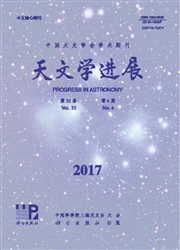

 中文摘要:
中文摘要:
BDS导航系统授权服务通过提供实时广域差分改正,满足高精度导航用户的导航需求。研究独立时间同步支持下的BDS卫星导航系统的广域差分修正模型与方法,比较了星历和星钟误差的一维(即ICD文件中的等效钟差)和四维差分等两种模式的修正性能,利用DOP值分析了星历改正的误差传播规律。分析表明,一维差分模式的修正精度随轨道误差增加而降低,不适用于在轨卫星故障及GEO卫星轨道机动后轨道快速恢复等情况,并且会降低广域差分系统的可用性;而仅在星地观测条件下,广域差分的三维星历和钟差分离的四维差分模式稳定性较差,区域监测网分布严重限制了星历和钟差误差的分离精度。随着BDS全球系统发展,为满足星座自主导航的需求,系统将提供星间链路观测。通过建立仿真平台,对星间链路支持下的星历和星钟误差分离方法进行研究与分析,结果得出,增加星间链路观测,可以有效地分离星历和星钟误差,将星历误差传播放大因子降低约50%;与一维差分模型相比,将监测站布站稀疏区域内的用户差分改正精度提高约60%。
 英文摘要:
英文摘要:
Real-time wide area differential corrections ensure BDS authorized users with high-accuracy navigation service. A new method for introducing time synchronization ob- servations for the correction estimation is introduced, the performance of two approaches with one- or four-dimensional correction parameters are compared. Results show that for one-dimensional approach, the correction accuracy will decrease when the orbital errors are large. Therefore it is not suitable for the situations such as quickly orbit determination recovery after satellite failure or maneuver. While for four-dimensional approach, the sta- bility and precision of ephemeris and satellite clock parameters are seriously affected by the limited regional monitoring network. Considering that the Inter satellite links will be setup to support auto-navigation for the global BDS system, the separation of orbital and satellite clock errors is discussed with inter satellite links. Simulation processing results show that the orbital errors in ephemeris may be effectively solved with inter satellite link observations, and propagation error may be reduced by 50%. Compared with one-dimensional approach, the performance of four-dimensional approach is also improved by 60% in the area lacked monitor stations.
 同期刊论文项目
同期刊论文项目
 同项目期刊论文
同项目期刊论文
 期刊信息
期刊信息
